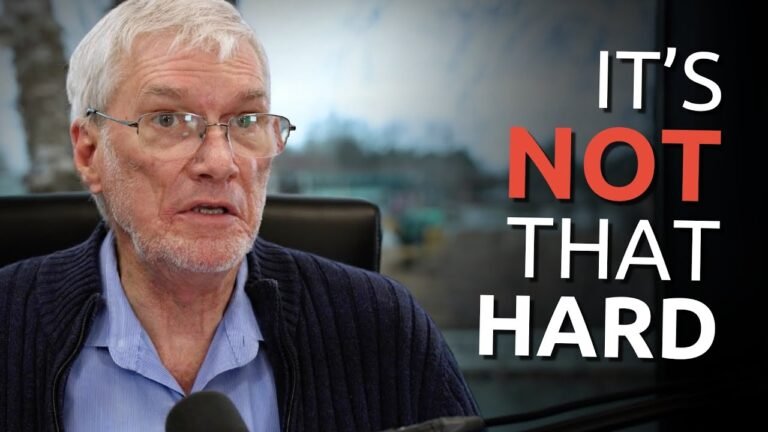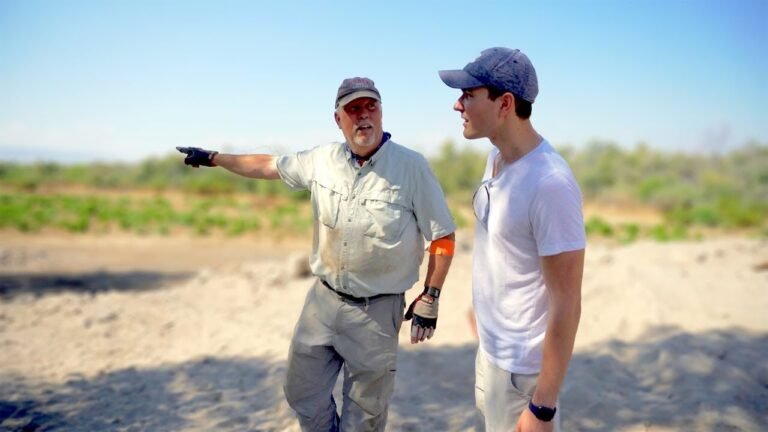Exploring the Marriages of Cain and Abel: A Biblical Inquiry
The story of Cain and Abel, two of the Bible’s most infamous figures, raises intriguing questions about family, lineage, and the origins of humanity. Among the many mysteries surrounding these brothers is the puzzling question: who did Cain and Abel marry? This inquiry not only delves into the scriptural text but also invites exploration of ancient customs, societal norms, and the implications of their marriages in the context of early human civilization. Join us as we unravel this fascinating topic and shed light on the complexities of their relationships within the narrative of Genesis.
What action did Cain take against Abel?
In a tale of jealousy and despair, Cain, a dedicated farmer, found himself consumed by rage when the Lord favored his brother Abel’s offering over his own. This overwhelming jealousy drove Cain to commit an unthinkable act—he murdered Abel, shattering the bond of brotherhood and succumbing to darkness.
As a consequence of his actions, the Lord cast Cain out from the settled land, marking him as a wanderer. This banishment served as a poignant reminder of the repercussions of envy and violence, illustrating how a single moment of anger can alter the course of one’s life forever. Cain’s story echoes through time, cautioning against the dangers of unchecked emotions and the fragility of familial ties.
Who was born first, Adam or Cain?
In the Book of Genesis, the narrative begins with the creation of Adam and Eve, who are regarded as the first humans. Their existence marks the dawn of humanity, setting the stage for the unfolding stories of their descendants. This foundational account emphasizes the significance of their roles in the biblical tradition.
Following their creation, Adam and Eve had two sons, Cain and Abel. Cain, being the firstborn, holds a prominent position in the story, representing the challenges and complexities of human relationships. His actions and the consequences that follow illustrate themes of jealousy, responsibility, and morality that are still relevant today.
Thus, while Adam and Eve are the original humans, it is Cain, their first son, who emerges next in the biblical timeline. This sequence not only establishes a familial lineage but also invites reflection on the choices individuals make and their impact on subsequent generations.
Who is considered to be Cain’s first wife in the Bible?
In the biblical narrative, Cain is a significant figure known for being the firstborn son of Adam and Eve. After committing the grave act of murdering his brother Abel, Cain faced divine punishment and was marked for protection to prevent others from killing him. However, the Bible provides limited details about his life after this incident, including the identity of his wife.
Although not explicitly mentioned in the canonical texts, Jewish tradition and various interpretations suggest that Cain married one of his sisters. The early chapters of Genesis indicate that Adam and Eve had multiple children, which implies that Cain could have married a sibling, as intermarriage among close relatives was common in that early period. This interpretation aligns with the understanding that the human population was still very limited at the time.
The lack of specific information about Cain’s wife has led to much speculation and discussion among scholars and theologians. Some propose names from extra-biblical sources, while others emphasize the mystery surrounding her identity. Ultimately, the story serves to highlight themes of sin, responsibility, and the complexities of human relationships in the ancient world, leaving the true identity of Cain’s wife to the imagination of readers.
Unpacking the Unseen Bonds of Genesis
In the tapestry of Genesis, the threads of connection weave through the narratives of creation, family, and faith, revealing a profound web of unseen relationships. Each story, from the formation of the world to the trials of the patriarchs, reflects a deeper unity that transcends time and circumstance. As we explore these foundational tales, we uncover the intricate ties that bind humanity to the divine and to one another, illustrating the shared journey of existence.
The characters in Genesis are not mere figures of the past; they embody universal struggles and aspirations that resonate across generations. Adam and Eve’s choice in the Garden, the sibling rivalry of Cain and Abel, and Abraham’s covenant with God each highlight the complexities of human nature and the choices that shape our destinies. These moments of tension and triumph reveal how personal decisions ripple outward, influencing relationships and communities, and reminding us that our lives are interwoven in unexpected ways.
Ultimately, the bonds depicted in Genesis invite us to reflect on our own connections in the modern world. As we navigate the challenges of life, the stories of our ancestors encourage us to recognize the invisible threads that link us to each other and to a greater purpose. By acknowledging these unseen bonds, we foster empathy, understanding, and a sense of belonging that can guide us through the complexities of our shared human experience.
Love, Conflict, and Family Ties in Scripture
In the tapestry of Scripture, love weaves a complex narrative enriched by conflict and profound family ties. From the passionate devotion of Ruth to her mother-in-law Naomi, illustrating loyalty against the backdrop of loss, to the tumultuous relationship of Jacob and Esau, where sibling rivalry ignites a lifelong struggle, these stories reveal the depths of human emotion. Each encounter, marked by both devotion and strife, underscores the intricate dynamics of familial bonds, reminding us that love often flourishes amidst discord. Ultimately, these timeless tales reflect the enduring nature of relationships, where faith and forgiveness intertwine, offering wisdom that resonates through generations.
The Untold Stories Behind Two Iconic Figures
Beneath the glimmering surface of fame, the stories of two iconic figures reveal a tapestry of resilience and determination. One figure, a trailblazing artist, emerged from humble beginnings, using their creativity to challenge societal norms and inspire a generation. Their journey from anonymity to acclaim was marked by personal struggles and a relentless pursuit of authenticity, proving that true artistry often arises from the depths of adversity. The other, a revolutionary leader, faced insurmountable odds in their quest for justice, channeling their passion into a movement that would alter the course of history. Their unwavering commitment to a cause ignited hope in countless hearts, showcasing the power of one voice to effect monumental change.
These narratives, often overshadowed by their public personas, highlight the profound impact of personal sacrifice and the courage to stand up against injustice. The artist’s evocative works served as a mirror to society, prompting reflection and dialogue, while the leader’s strategic vision galvanized a community towards collective action. Together, they embody the essence of what it means to be a beacon of inspiration in a world rife with challenges. Their untold stories remind us that behind every celebrated legacy lies an intricate journey of struggle, passion, and the indomitable spirit to create a better future.
Analyzing Relationships in Early Biblical Narratives
The early biblical narratives present a rich tapestry of relationships that reveal fundamental human dynamics. From the familial bonds of Adam and Eve to the complex interactions among the patriarchs, these stories illustrate the foundational themes of love, betrayal, and reconciliation. Each character’s choices and relationships shape not only their own destinies but also the trajectory of the entire biblical narrative, highlighting the interconnectedness of personal and communal histories.
As we delve deeper into these narratives, the significance of covenant emerges as a central theme. The relationships between God and humanity, as well as among individuals, often hinge on promises and commitments that redefine their identities. Figures like Abraham and Moses exemplify the weight of these covenants, demonstrating how trust and loyalty can lead to profound transformations. The exploration of these bonds offers insights into the moral and ethical frameworks that govern human behavior, emphasizing the importance of faithfulness in both divine and earthly relationships.
Moreover, the early biblical stories often address the complexities of human emotions and conflicts, showcasing the struggle for power, acceptance, and belonging. Characters like Cain and Abel or Jacob and Esau embody the tensions that arise within families, reflecting broader societal challenges. These narratives encourage readers to contemplate their own relationships and the choices that define them, ultimately suggesting that understanding and navigating interpersonal dynamics is a timeless endeavor critical to human experience.
Insights into Divine and Human Connections
Throughout history, the exploration of divine and human connections has unveiled profound insights into our existence and purpose. Many cultures and religions emphasize the interplay between the spiritual and the earthly, suggesting that our relationships with the divine shape our interactions with one another. This intricate tapestry of belief and experience fosters a sense of belonging, guiding individuals toward a deeper understanding of themselves and their place in the universe.
At the heart of these connections lies the notion of love—both divine and human. Love transcends mere emotion; it serves as a powerful force that binds us together. When we recognize the divine love that permeates the universe, we are inspired to extend that love to others, cultivating empathy, compassion, and unity. This reciprocal relationship not only strengthens our faith but also enhances our social bonds, reminding us that we are all part of a larger, interconnected whole.
Ultimately, the insights garnered from examining these connections encourage us to seek harmony between our spiritual beliefs and our everyday interactions. By nurturing our relationship with the divine, we can cultivate a mindset that promotes understanding and kindness. This journey of exploration invites us to reflect on our values and inspires us to create a world where compassion reigns, bridging the gap between humanity and the divine.
The intriguing question of who Cain and Abel married continues to spark curiosity and debate among scholars and enthusiasts alike. While the biblical text provides limited information, theories about their spouses often reflect broader themes of family, lineage, and the human experience. Whether viewed through a historical, theological, or cultural lens, this topic invites us to explore the complexities of early human relationships and the narratives that shape our understanding of origins. Ultimately, the story of Cain and Abel serves as a reminder of the enduring mysteries that lie at the heart of our shared mythology.







